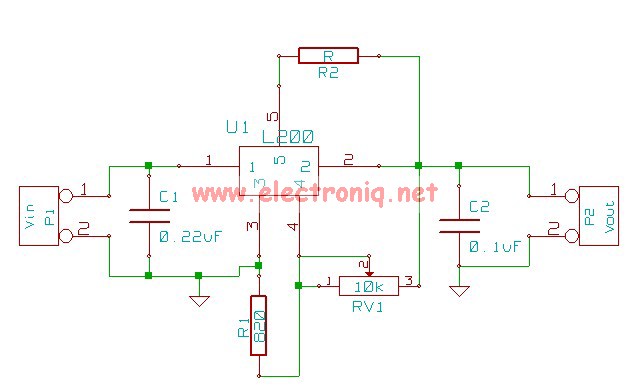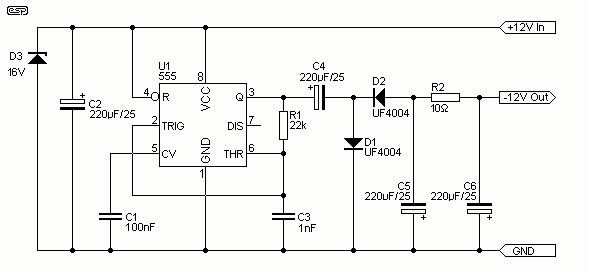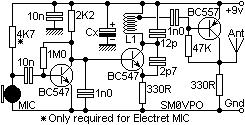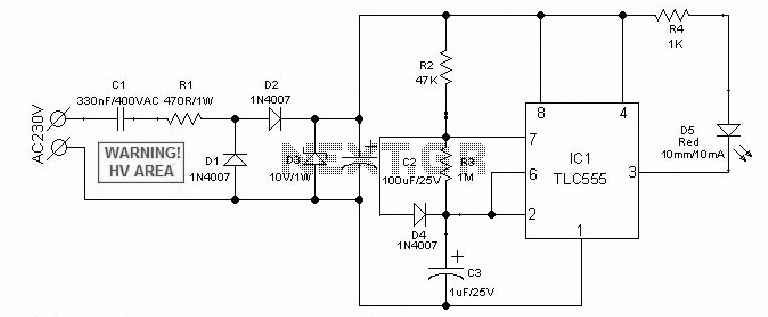
L200 Regulator Power Supply

The following circuit illustrates the L200 Regulator Power Supply Circuit Diagram. Features include its use in power supply applications with specified voltage and current.
The L200 voltage regulator is a versatile and adjustable linear regulator designed for various power supply applications. It can deliver output voltages ranging from 3V to 32V and can handle output currents up to 2A, making it suitable for a wide range of electronic devices. The circuit typically includes the L200 integrated circuit, along with external components such as resistors, capacitors, and diodes to optimize performance and stability.
In a typical L200 power supply circuit, the input voltage is applied to the L200 IC, which regulates it to the desired output voltage. The output voltage can be adjusted using a pair of resistors configured as a voltage divider. The feedback pin of the L200 monitors the output voltage, ensuring that it remains stable despite variations in load current or input voltage.
Capacitors are often included at the input and output of the regulator to filter out noise and stabilize the voltage. An additional bypass capacitor may be connected to the feedback pin to enhance transient response. Protection features such as thermal shutdown and current limiting are integrated into the L200, safeguarding the circuit from overload conditions.
The L200 regulator is commonly used in applications requiring a stable power supply, such as in audio equipment, microcontroller circuits, and testing setups. Its ability to provide adjustable output voltage and current makes it a valuable component in many electronic designs. Proper layout and component selection are essential for achieving optimal performance and reliability in the final application.The following circuit shows about L200 Regulator Power Supply Circuit Diagram. Features: used in power supply with voltage and current .. 🔗 External reference
The L200 voltage regulator is a versatile and adjustable linear regulator designed for various power supply applications. It can deliver output voltages ranging from 3V to 32V and can handle output currents up to 2A, making it suitable for a wide range of electronic devices. The circuit typically includes the L200 integrated circuit, along with external components such as resistors, capacitors, and diodes to optimize performance and stability.
In a typical L200 power supply circuit, the input voltage is applied to the L200 IC, which regulates it to the desired output voltage. The output voltage can be adjusted using a pair of resistors configured as a voltage divider. The feedback pin of the L200 monitors the output voltage, ensuring that it remains stable despite variations in load current or input voltage.
Capacitors are often included at the input and output of the regulator to filter out noise and stabilize the voltage. An additional bypass capacitor may be connected to the feedback pin to enhance transient response. Protection features such as thermal shutdown and current limiting are integrated into the L200, safeguarding the circuit from overload conditions.
The L200 regulator is commonly used in applications requiring a stable power supply, such as in audio equipment, microcontroller circuits, and testing setups. Its ability to provide adjustable output voltage and current makes it a valuable component in many electronic designs. Proper layout and component selection are essential for achieving optimal performance and reliability in the final application.The following circuit shows about L200 Regulator Power Supply Circuit Diagram. Features: used in power supply with voltage and current .. 🔗 External reference





